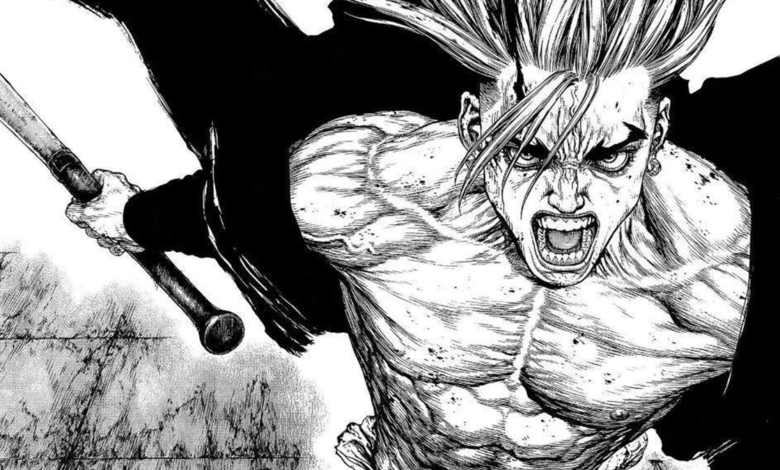Unraveling the Enigmatic World of Vagabond Manga: A Comprehensive Guide

Introduction
In the sprawling landscape of manga, few works stand as tall and enigmatic as “Vagabond.” Crafted by the masterful hand of Takehiko Inoue, this epic tale draws readers into the heart of feudal Japan, where honor, conflict, and the pursuit of mastery intertwine to create a mesmerizing narrative. As we embark on this journey through the pages of “Vagabond,” we’ll delve deep into its historical context, character dynamics, artistic brilliance, and enduring legacy.
Historical Context
Set against the backdrop of the Sengoku period, “Vagabond” transports readers to a tumultuous era marked by incessant warfare and shifting allegiances. Through meticulous research and vivid storytelling, Inoue paints a vivid picture of feudal Japan, capturing the essence of its political intrigue, social hierarchy, and cultural nuances. From the battlefields of Sekigahara to the tranquil landscapes of Kyushu, each scene is imbued with historical authenticity, inviting readers to immerse themselves in a bygone era.
Character Analysis
At the heart of “Vagabond” lies the complex figure of Miyamoto Musashi, a wandering swordsman whose journey towards enlightenment serves as the focal point of the narrative. From his brash youth to his eventual mastery of the sword, Musashi undergoes a profound transformation, grappling with questions of identity, purpose, and the nature of true strength. Alongside Musashi are a host of compelling characters, each with their own motivations and conflicts, whose intertwining destinies shape the course of the story.
Artistry in Vagabond
One of the most striking aspects of “Vagabond” is its unparalleled artwork, characterized by its fluid lines, intricate details, and expressive character designs. Inoue’s skill as an artist shines through in every panel, from the sweeping vistas of feudal Japan to the intimate moments of introspection shared by the characters. Through his masterful use of light, shadow, and composition, Inoue creates a visual feast that elevates the storytelling to new heights, captivating readers with its beauty and depth.
Themes and Motifs
At its core, “Vagabond” explores timeless themes of ambition, honor, and the search for meaning in a chaotic world. Through Musashi’s journey, readers are confronted with the complexities of the human condition, as he grapples with his own flaws and aspirations. Central to the narrative is the concept of bushido, the samurai code of ethics, which serves as both a guiding principle and a source of conflict for the characters. As Musashi strives to perfect his swordsmanship, he must also confront the moral implications of his actions, leading to moments of introspection and self-discovery.
Narrative Structure
In crafting the narrative of “Vagabond,” Inoue employs a dynamic storytelling technique that blends action, introspection, and philosophical musings. Through the use of flashbacks, inner monologues, and symbolic imagery, he creates a multi-layered narrative that invites readers to ponder the deeper meaning behind each encounter. The pacing of the story is expertly handled, allowing for moments of quiet reflection amidst the flurry of swordplay and intrigue. As the plot unfolds, new layers of complexity are revealed, keeping readers eagerly turning the pages in anticipation of what lies ahead.
Influence and Legacy
Since its inception, “Vagabond” has left an indelible mark on the world of manga, inspiring countless artists and writers with its rich storytelling and breathtaking artwork. Its influence extends far beyond the confines of the medium, shaping popular culture and sparking discussions on themes ranging from honor and identity to the nature of artistic expression. Takehiko Inoue’s meticulous attention to detail and unwavering commitment to his craft have earned him a devoted following of fans, who continue to be captivated by his work to this day.
Cultural Significance
“Vagabond” not only serves as a captivating work of fiction but also as a window into the cultural heritage of Japan. Through its vivid depiction of historical events and traditions, it offers readers a deeper understanding of the country’s rich history and cultural legacy. From the intricacies of samurai etiquette to the nuances of Zen philosophy, “Vagabond” provides a nuanced portrayal of Japanese society that resonates with readers around the world.
Real-Life Inspirations
While “Vagabond” is a work of fiction, it draws heavily from real-life historical figures and events, adding a layer of authenticity to its storytelling. At the center of the narrative is Miyamoto Musashi, a legendary swordsman whose exploits have been immortalized in countless works of literature and art. Inoue’s meticulous research and attention to detail ensure that Musashi’s story is grounded in historical reality, allowing readers to glimpse the man behind the legend.
Critical Reception
From its inception, “Vagabond” has garnered widespread acclaim from critics and readers alike, earning praise for its compelling characters, intricate plotting, and stunning artwork. Its exploration of complex themes and its nuanced portrayal of historical events have made it a favorite among fans of manga and literature alike. However, the series has not been without its controversies, with some critics questioning its historical accuracy and others criticizing its portrayal of certain characters and events.
Adaptations and Spin-offs
Over the years, “Vagabond” has spawned numerous adaptations and spin-offs, including an anime series, films, and merchandise. While these adaptations have introduced the series to new audiences, they have also sparked debate among fans over their faithfulness to the source material. Additionally, a number of spin-off works have emerged, exploring different aspects of the “Vagabond” universe and delving deeper into the lives of its characters.
Behind the Scenes
The creation of “Vagabond” is a testament to Takehiko Inoue’s talent and dedication as an artist. From its humble beginnings to its current status as a cultural phenomenon, the series has been shaped by Inoue’s creative vision and unwavering commitment to excellence. In interviews and behind-the-scenes glimpses, he has offered fans insight into his creative process, revealing the painstaking attention to detail that goes into every page.
Fan Community and Fandom
The “Vagabond” community is a vibrant and passionate group of fans who share a deep appreciation for the series and its creator. From online forums and social media groups to fan art and cosplay events, fans of “Vagabond” come together to celebrate their love for the series and connect with fellow enthusiasts. Through their creativity and dedication, they keep the spirit of “Vagabond” alive and ensure that its legacy endures for generations to come.
Ethical and Philosophical Considerations
“Vagabond” raises thought-provoking questions about ethics, morality, and the nature of human existence. Through Musashi’s journey, readers are forced to confront the complexities of right and wrong, honor and duty, and the pursuit of greatness at any cost. As Musashi grapples with his own moral ambiguity, readers are invited to reflect on their own values and beliefs, prompting deeper introspection and self-discovery.
Educational Value
Beyond its entertainment value, “Vagabond” also serves as a valuable educational resource, offering insights into Japanese history, culture, and philosophy. Teachers and scholars alike



